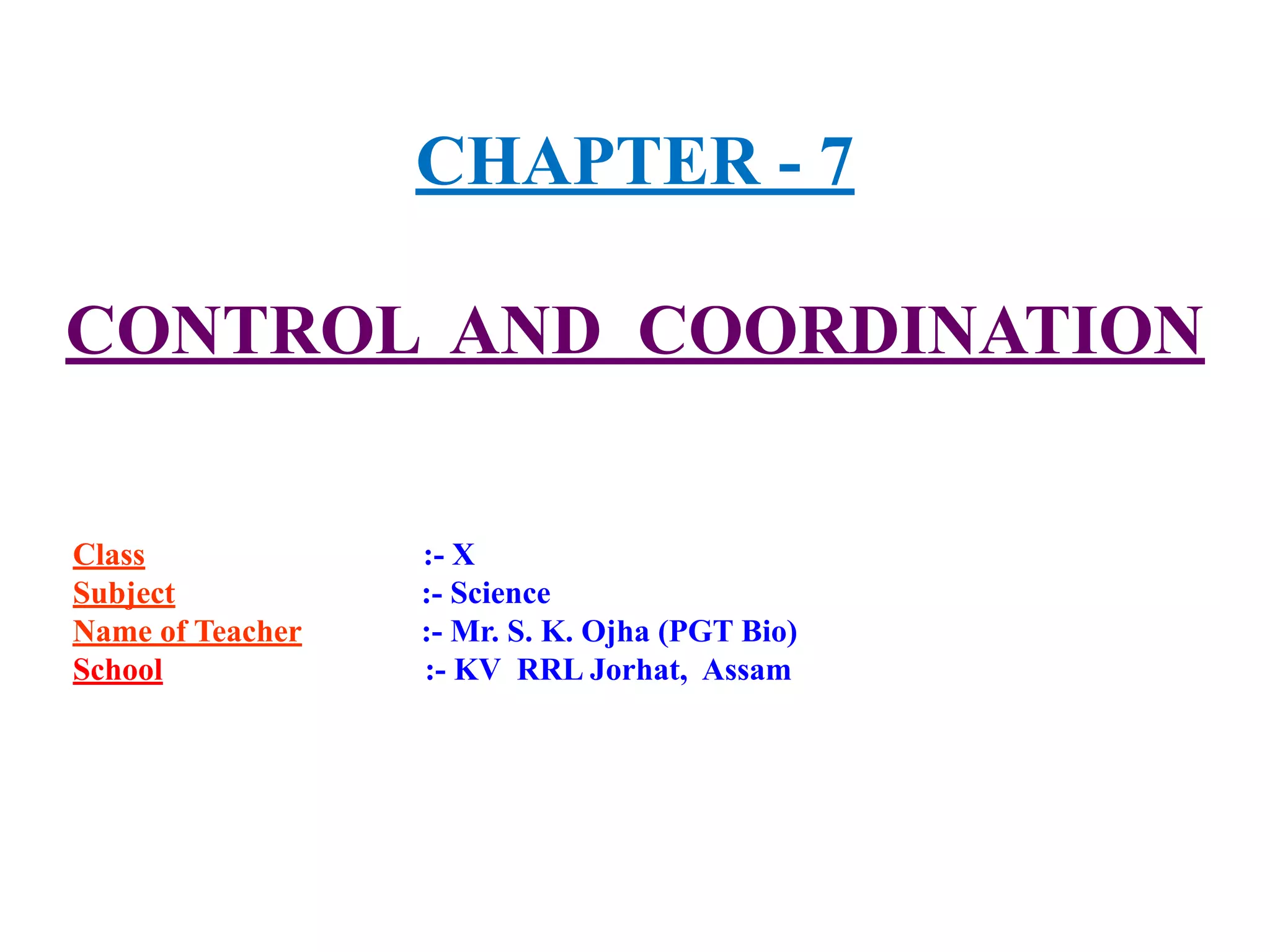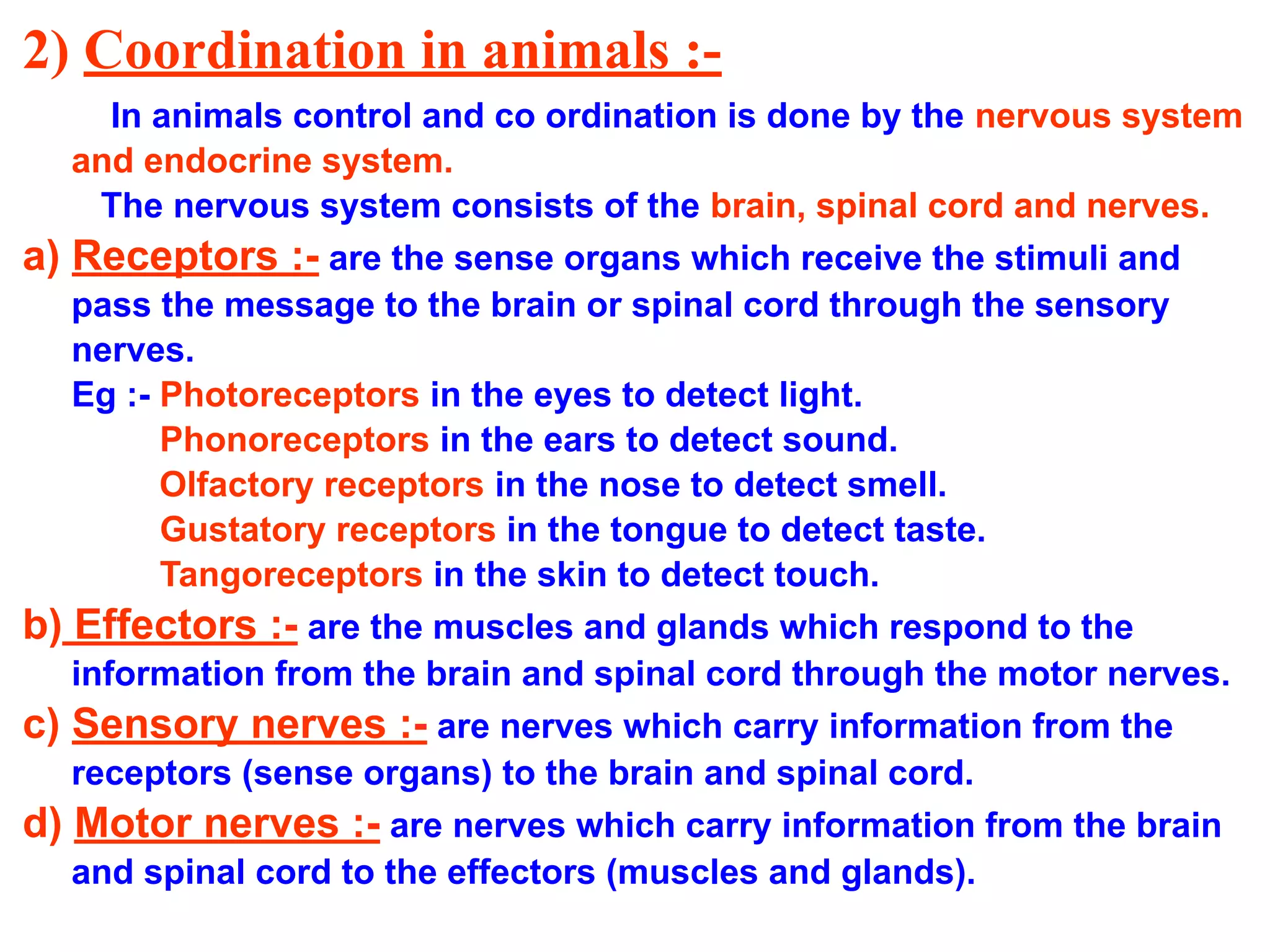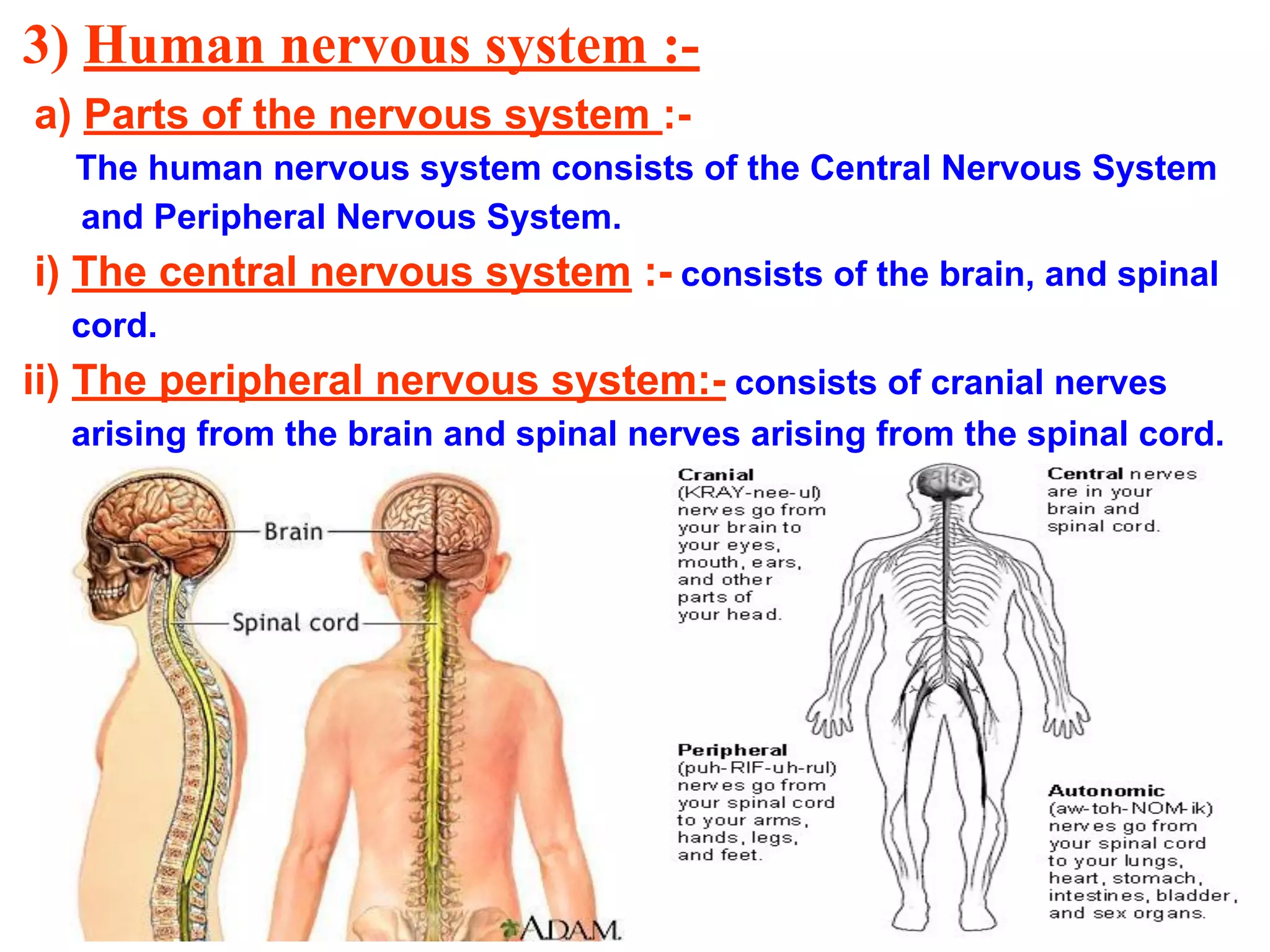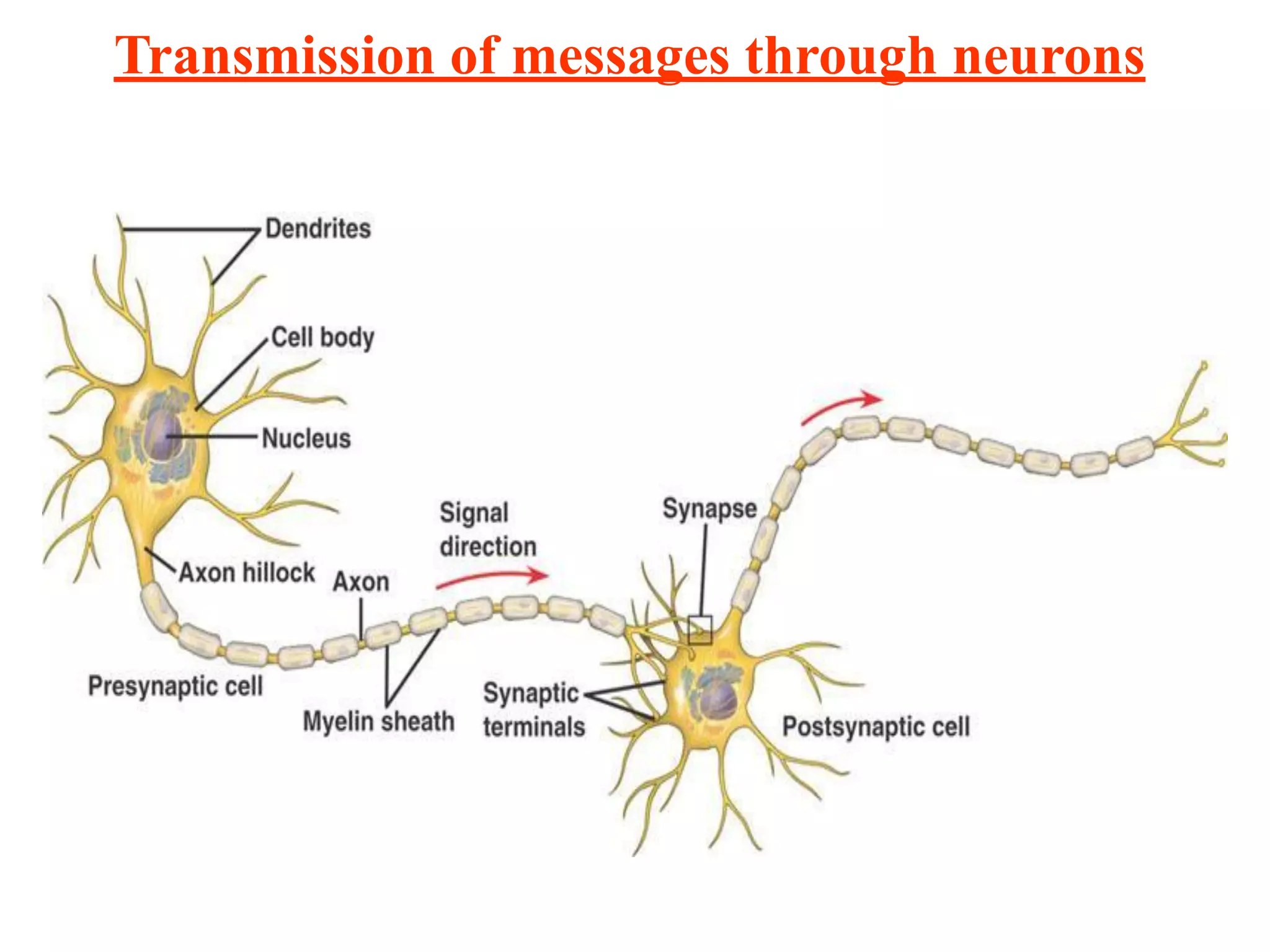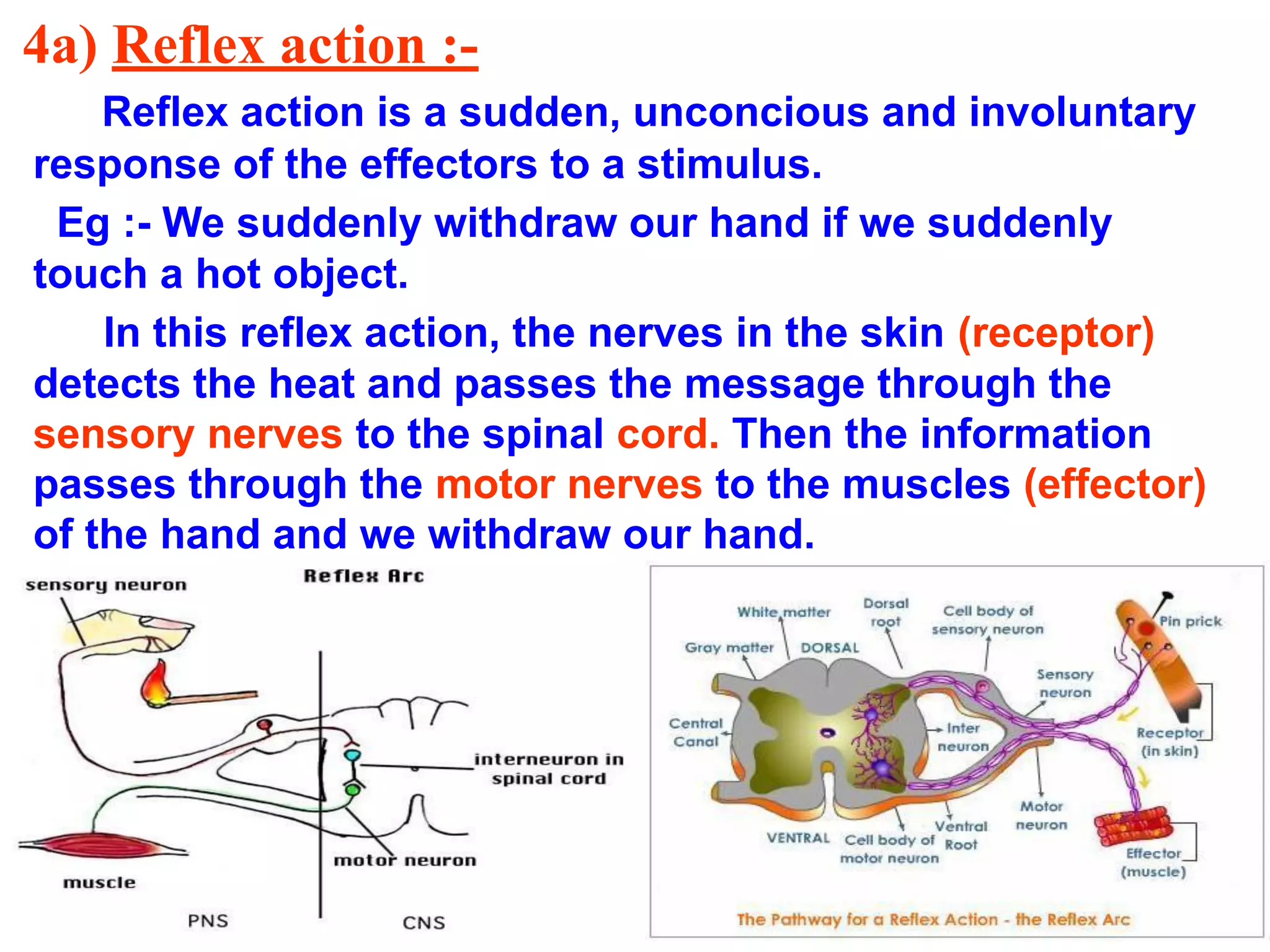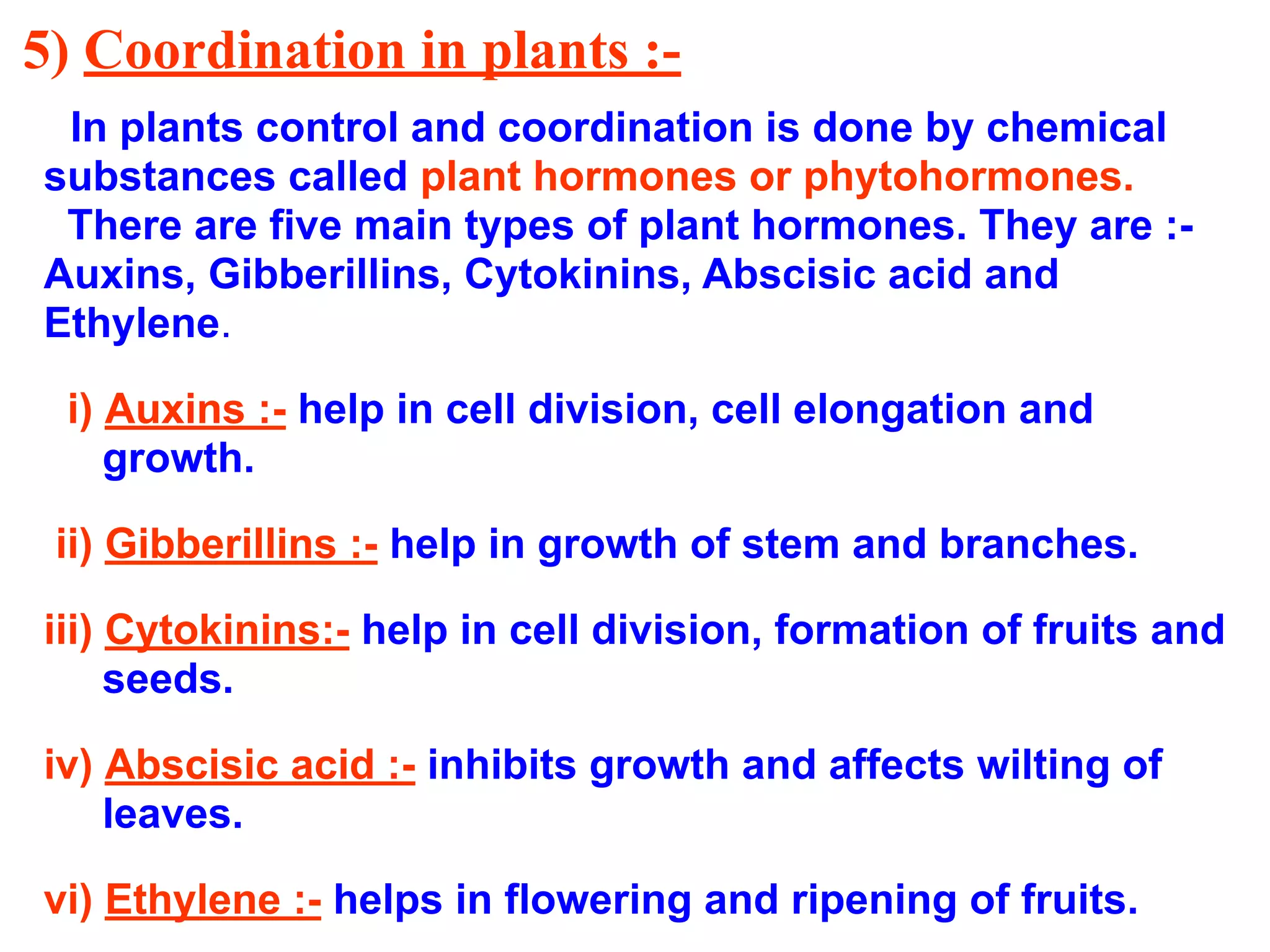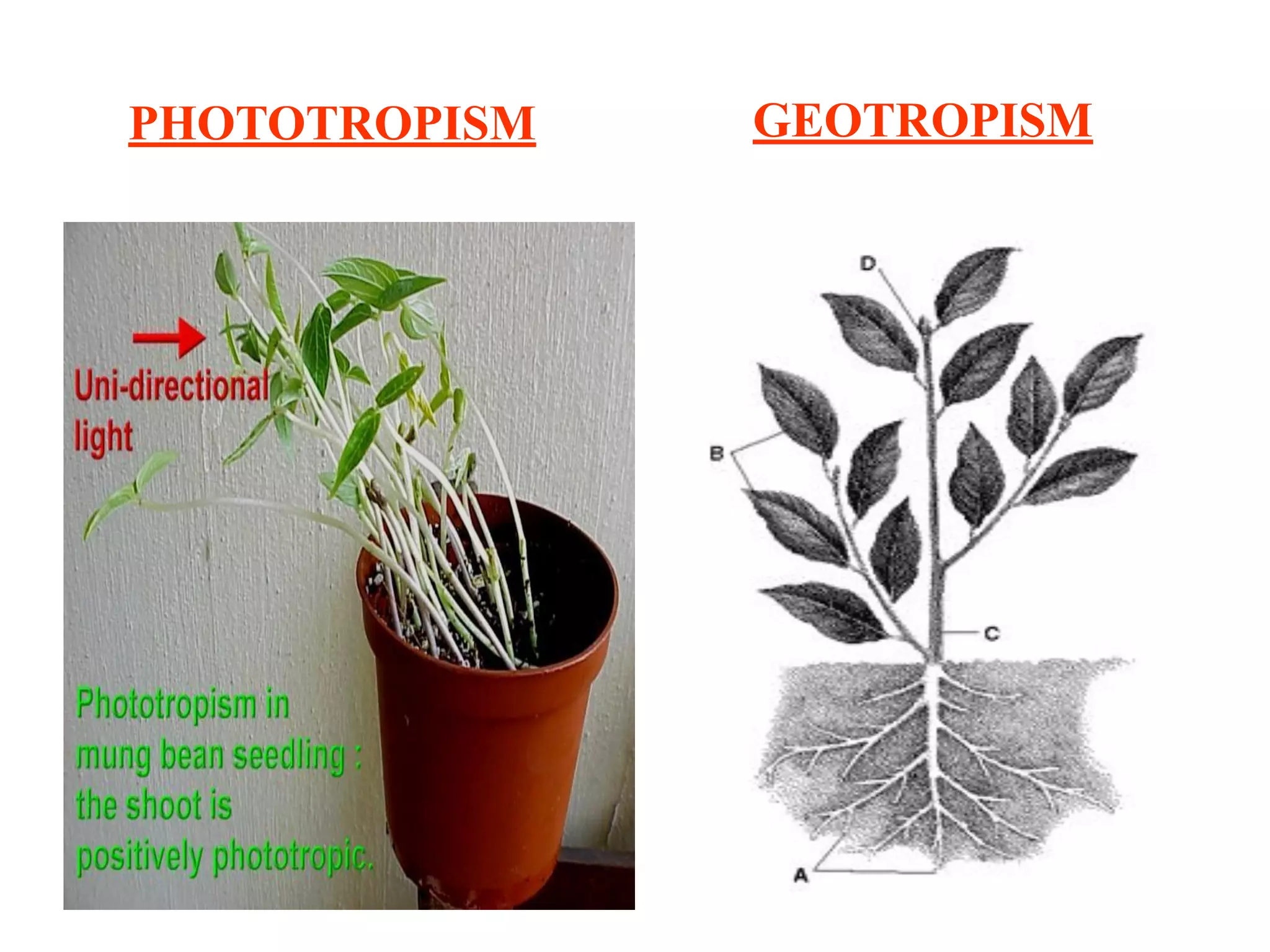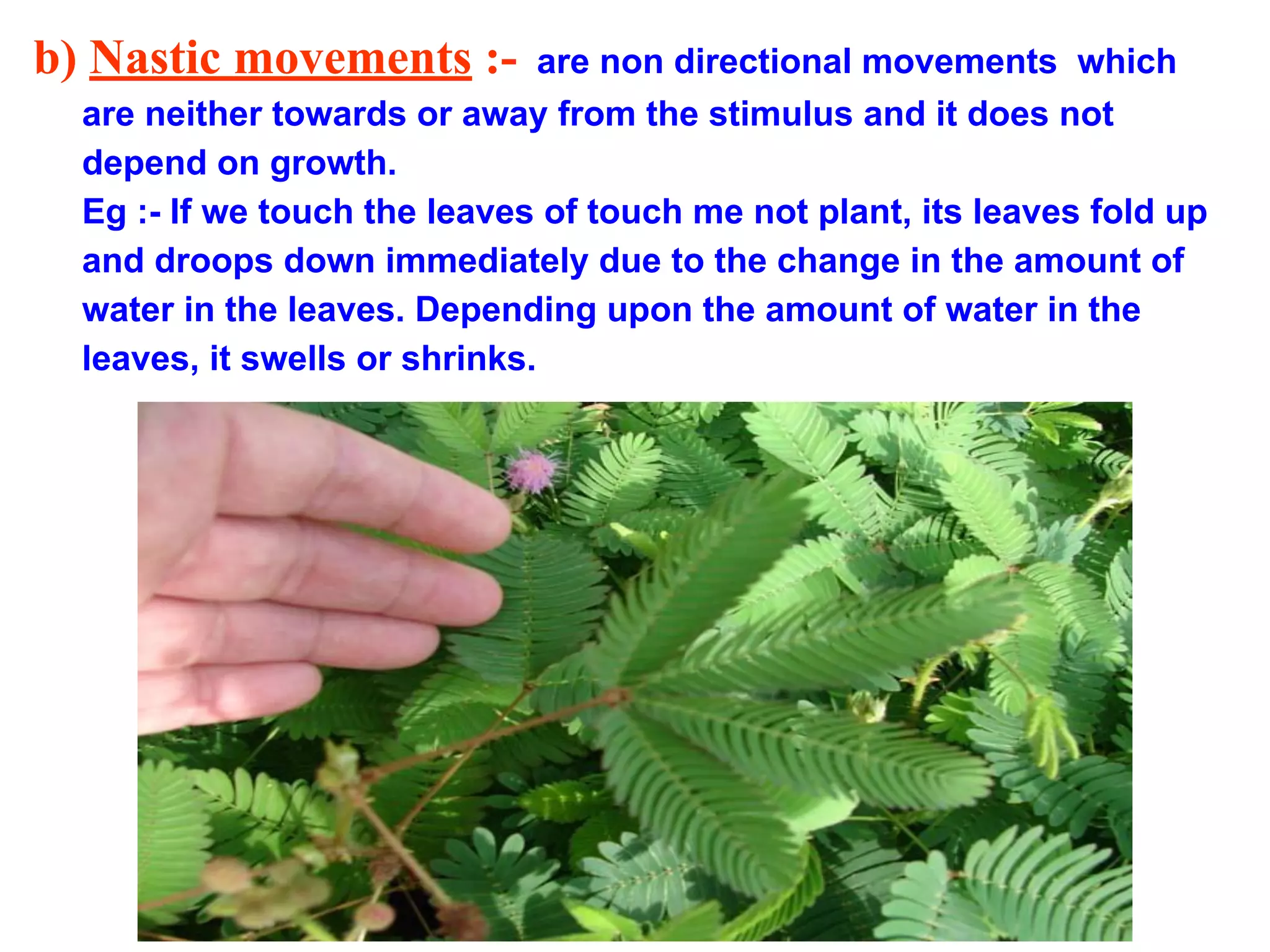Control and coordination in animals is carried out by the nervous system and endocrine system. The nervous system consists of the brain, spinal cord and nerves. It detects stimuli through receptors and responds through effectors like muscles and glands. The pathways between receptors, central nervous system and effectors allow for reflex actions which occur unconsciously. In plants, coordination is carried out by plant hormones which allow for movements like tropisms in response to stimuli and nastic movements in response to internal factors. The endocrine system also helps coordinate responses through hormones that regulate growth, metabolism and developmental changes.
